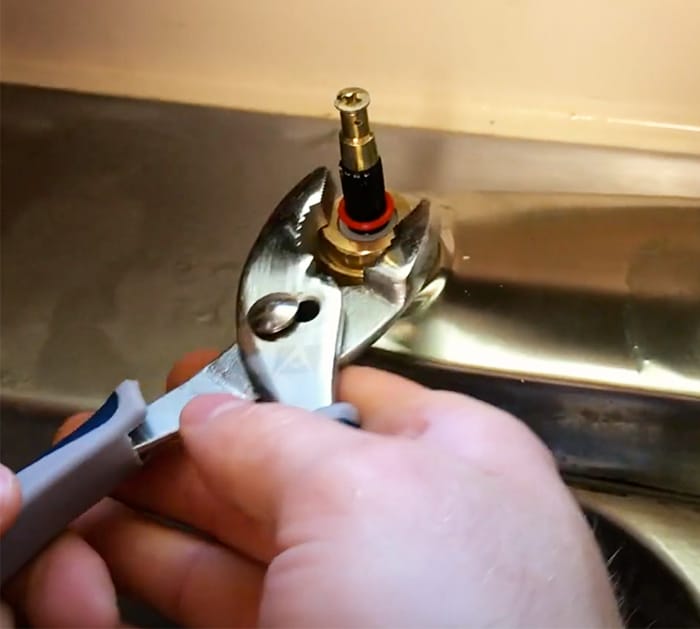Reasons Why It's Essential to Repair a Malfunctioning Faucet
Reasons Why It's Essential to Repair a Malfunctioning Faucet
Blog Article
They are making a few great observations on How to Fix a Dripping or Leaky Faucet overall in the article down below.

Leaking taps might feel like a minor hassle, yet their impact exceeds just the nuisance of the sound. From wasting water to incurring unneeded financial prices and wellness risks, neglecting a trickling faucet can lead to numerous consequences. In this post, we'll explore why it's crucial to address this typical house issue quickly and successfully.
Wastefulness of Water
Ecological Influence
Dripping taps contribute substantially to water wastage. According to the Epa (EPA), a solitary faucet leaking at one drip per secondly can squander more than 3,000 gallons of water annually. This not just strains water sources yet also impacts ecological communities and wild animals dependent on them.
Financial Expenses
Increased Water Expenses
Beyond the environmental effect, trickling faucets can pump up water expenses considerably. The accumulated wastage over time translates into higher utility expenditures, which can have been avoided with timely repair work.
Prospective Building Damages
In addition, long term trickling can bring about harm to fixtures and surface areas bordering the tap. Water buildup can trigger staining, rust, and even architectural problems if left ignored, leading to additional fixing prices.
Health and wellness Worries
Mold and Mildew Growth
The constant visibility of wetness from a leaking faucet develops an excellent atmosphere for mold and mold development. These fungi not just jeopardize indoor air top quality however also posture health and wellness risks, specifically for individuals with respiratory problems or allergies.
Waterborne Conditions
Stagnant water in dripping taps can become a breeding place for germs and other pathogens, boosting the risk of waterborne conditions. Pollutants such as Legionella bacteria grow in stationary water, possibly causing significant illnesses when ingested or breathed in.
Do it yourself vs. Specialist Fixing
Benefits and drawbacks of DIY Repair Service
While some may try to fix a leaking tap themselves, DIY fixings come with their very own collection of challenges. Without proper understanding and devices, do it yourself attempts can worsen the concern or result in insufficient fixings, lengthening the issue.
Advantages of Working With a Professional Plumber
Employing an expert plumber makes certain that the underlying reason for the leaking tap is resolved efficiently. Plumbing professionals have the knowledge and tools to detect and repair faucet issues efficiently, conserving time and minimizing the threat of more damages.
Step-by-Step Overview to Dealing With a Dripping Faucet
Tools Required
Prior to trying to fix a trickling tap, gather the required devices, consisting of a flexible wrench, screwdrivers, substitute parts (such as washing machines or cartridges), and plumber's tape.
Common Tap Issues and Their Solutions
Determine the sort of tap and the certain issue creating the drip. Typical issues consist of worn-out washers, rusty valve seats, or defective O-rings. Refer to producer instructions or online tutorials for step-by-step assistance on repair services.
Preventive Measures
Regular Upkeep Tips
To prevent leaking faucets, carry out routine maintenance such as cleaning aerators, inspecting for leakages, and changing worn-out parts promptly. In addition, consider installing water-saving gadgets or upgrading to more reliable components.
Value of Prompt Repair Works
Dealing with dripping taps as soon as they're noticed prevents more water wastage and potential damage, inevitably saving both water and money in the future.
Impact on Residential Property Value
Understanding of Well-Maintained Home
Maintaining a building in good condition, consisting of addressing maintenance problems like trickling taps, boosts its perceived value and charm among potential purchasers or occupants.
Impact on Resale Value
Features with well-maintained plumbing fixtures, consisting of taps, command greater resale worths in the realty market. Attending to trickling faucets can add to a positive perception during residential or commercial property examinations and arrangements.
Ecological Responsibility
Individual Contribution to Preservation
Taking responsibility for taking care of dripping faucets straightens with wider efforts towards water preservation and ecological sustainability. Every person's activities collectively make a substantial effect on maintaining priceless sources.
Lasting Living Practices
By focusing on prompt fixings and taking on water-saving routines, individuals add to lasting living methods that profit both existing and future generations.
Verdict
Attending to a leaking faucet exceeds plain convenience; it's a necessary step towards conserving water, minimizing monetary prices, and protecting health and residential or commercial property. Whether through do it yourself repair services or expert aid, doing something about it to take care of dripping taps is a small yet impactful means to promote accountable stewardship of resources and add to a healthier, a lot more lasting future.
How to Fix a Leaky Faucet: Step-by-Step Repair Guide
A leaky faucet may seem like a simple annoyance, but if it's not fixed promptly, that leak could cost hundreds to potentially thousands. From water damage to mold, mildew, and high water bills, even a tiny leak can be catastrophic if left unattended. Damage like this can even affect the overall value of your home, so it's important to take the right approach for leaky faucet repair. You may need the help of a plumber in some cases, but we've got a few tips you can try on how to fix a leaky faucet before calling the pros.
Four Faucet Types
When you're learning how to fix a leaky faucet, the first step is knowing what kind of faucet you're working with! There are four common types.
Cartridge Faucets
Cartridge faucets come in one- or two-handled varieties. In one-handled cartridge faucets, hot and cold water combines in a single cartridge. In the two-handled versions, hot and cold water are controlled separately and mixed in the faucet.
Ball Faucets
Ball faucets have a single lever you push up and down to adjust the pressure and rotate to change the temperature. A slotted metal ball controls the amount of water allowed into the spout.
Compression Washer Faucets
They're the oldest type of faucet, but they're still used in many homes — especially older ones. Compression faucets have two separate handles that, when turned, raise or lower the washer that seals a water valve. This valve stops water from flowing through the faucet when it is turned off.
Disc Faucets
Disc faucets rarely need to be repaired due to their maintenance-free design. The water flow is controlled by two discs — the upper one raises and lowers against a fixed lower disc, creating a watertight seal. If your disc faucet starts leaking, you may need to replace the seals or clean residue buildup from the inlets.
Fixing a Leaky Faucet
Step 1: Turn Off the Water
Whether you're learning how to fix a leaky bathtub faucet or how to fix a leaky kitchen faucet, always turn off the water supply to your working area when you're fixing a leak. The last thing you want is a flood added to your list of things to fix.
Look for the shutoff valves below your sink or around the tub and turn them clockwise to stop the water flow. If your faucet doesn't have shutoff valves, you may need to turn off the water for the whole house. Check to make sure it's off by turning the faucet on. If nothing comes out, you're ready to start the repair.
Step 2: Take Apart the Faucet
How you disassemble your faucet depends on the type of fixture you have. You can use a flathead screwdriver to remove the caps on top of the handle or handles for cartridge and compression faucets. Inside, you should see handle screws. Unscrew these with a screwdriver to remove the handle.
Disc- and ball-style faucets will typically have an inlet screw near the handle, and removing that will reveal the interior of the faucet.
Detach the Valve Stem
For cartridge- and compression-style faucets, you'll see the inner valve stem or cartridge once you remove the faucet handles. If you have a compression faucet, unscrew the brass valve stem. If you have a cartridge faucet, pull out the cartridge. If your cartridge has been in place for a while, it may require some tools or extra force to remove it due to mineral deposits.
Examine and Replace Parts
Once you've removed the parts, check them out to confirm what needs to be replaced. You may see corroded rubber washers, O-rings, stems, or cartridges. On a ball-style faucet, check the seats and springs for damage.
If you need to repair a leaky disc faucet, check the inlet and seals on the lower disc.
Once you determine what parts must be replaced, visit your local hardware store. Bring the damaged parts with you to ensure you can purchase the correct components to replace them.
Clean Valves and Faucet Cavity
If you've removed a stem or cartridge, you may notice mineral buildup in the faucet's threads. Use white vinegar to clean the valve seat by soaking it for a few minutes, then scrub it away with a soft toothbrush and rinse with warm water. You can also clean the interior of the faucet in the same way.
Reassemble the Faucet
Once your faucet is cleaned and the required parts have been replaced, it's time to reassemble it. Put the pieces back together and slowly turn the water supply back on. Doing this slowly is crucial because too much initial water pressure can damage the new hardware you've just installed.
https://homewarranty.firstam.com/blog/how-to-fix-leaky-faucet

I have been very inquisitive about Leaky Faucets: Why They Happen & What to Do About Them and I hope you enjoyed the new entry. Appreciated our article? Please quickly share it. Let others find it. We enjoy your readership.
Report this page